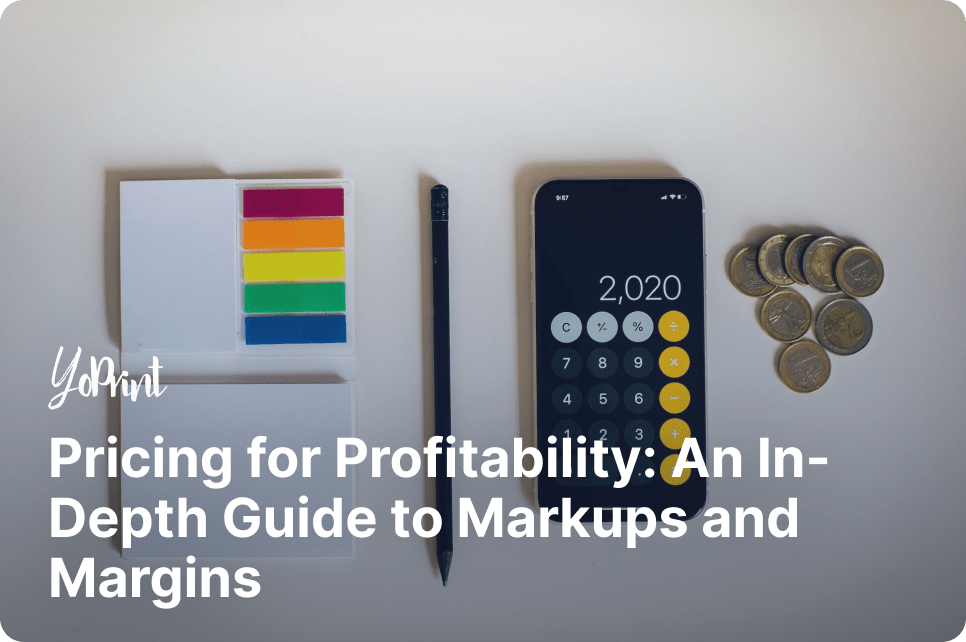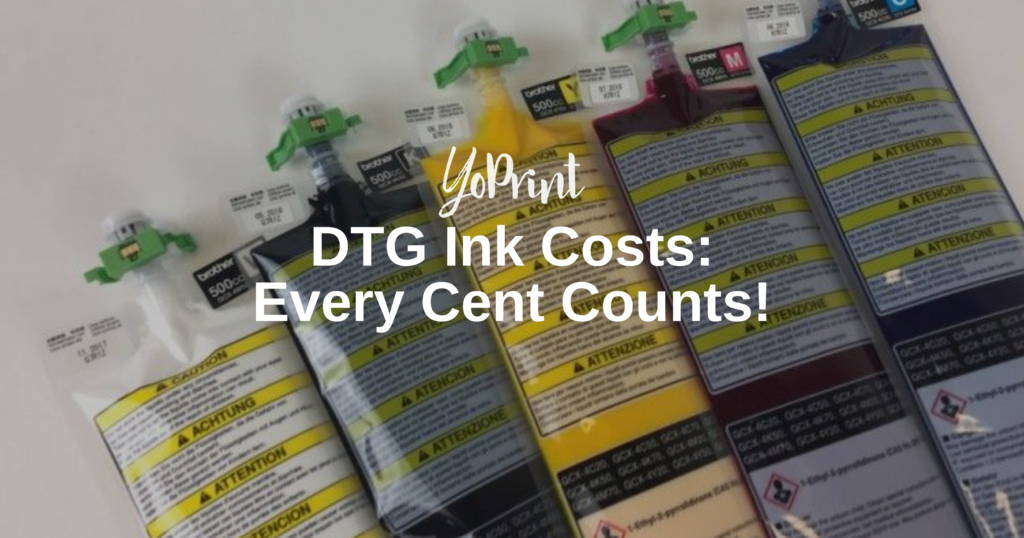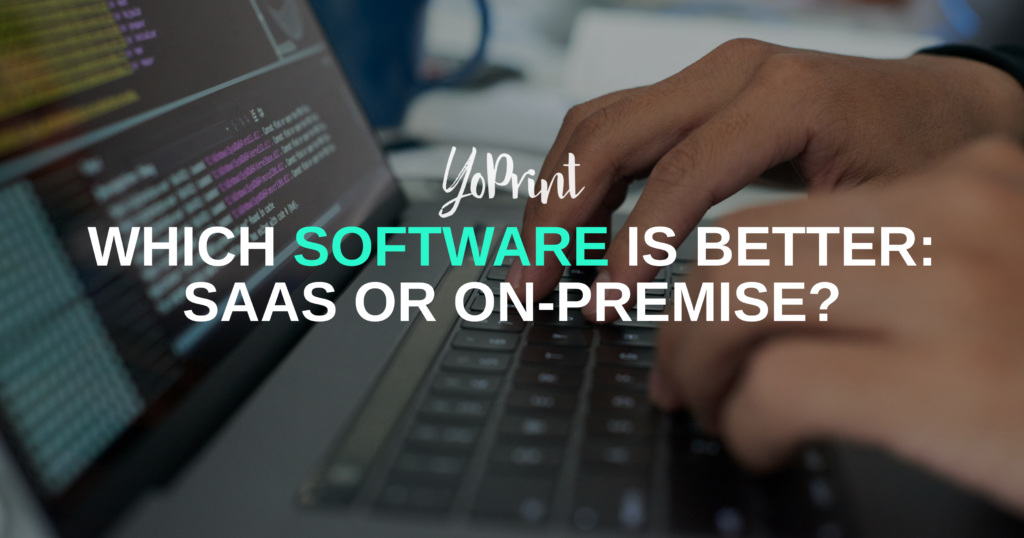In this post, we’ll help you determine the right amount for markups and margins so you can make substantial profits to boost your print shop’s finances.
The formula for profit is simple: price – cost = profit.
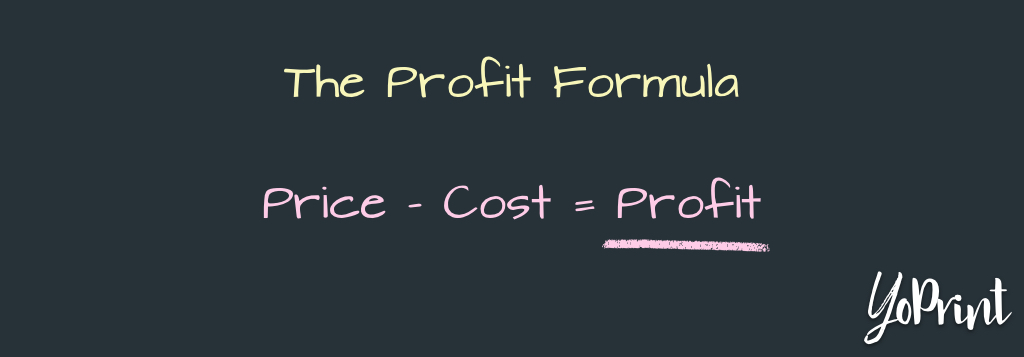
The question is, how can you price your product for profitability? Let’s look at two common pricing strategies: Markups and Margins.
What is Markup?
Markup is the difference between price and cost. In other words, markup is your profit.
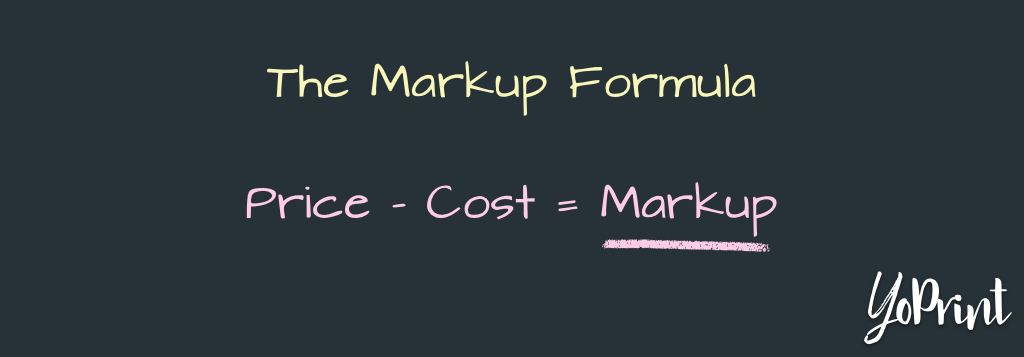
Let’s say that Jane runs a screen printing business. Buying, printing, and preparing a shirt for sale costs $20.00. Jane wants to make a profit of $10.00. Jane marks up the t-shirt by $10.00, which brings the product price to $30.00.
What is Markup Percentage?
Markup percentage (%) is the profit to cost ratio. Often, when someone is talking about markup, they are referring to markup percentage. Here is the formula: (price – cost) / cost = markup %
Going back to Jane. Her cost is $20.00, and her markup is $10.00. Therefore ($20.00 – $10.00) / $10.00 = 0.5 or 50%.
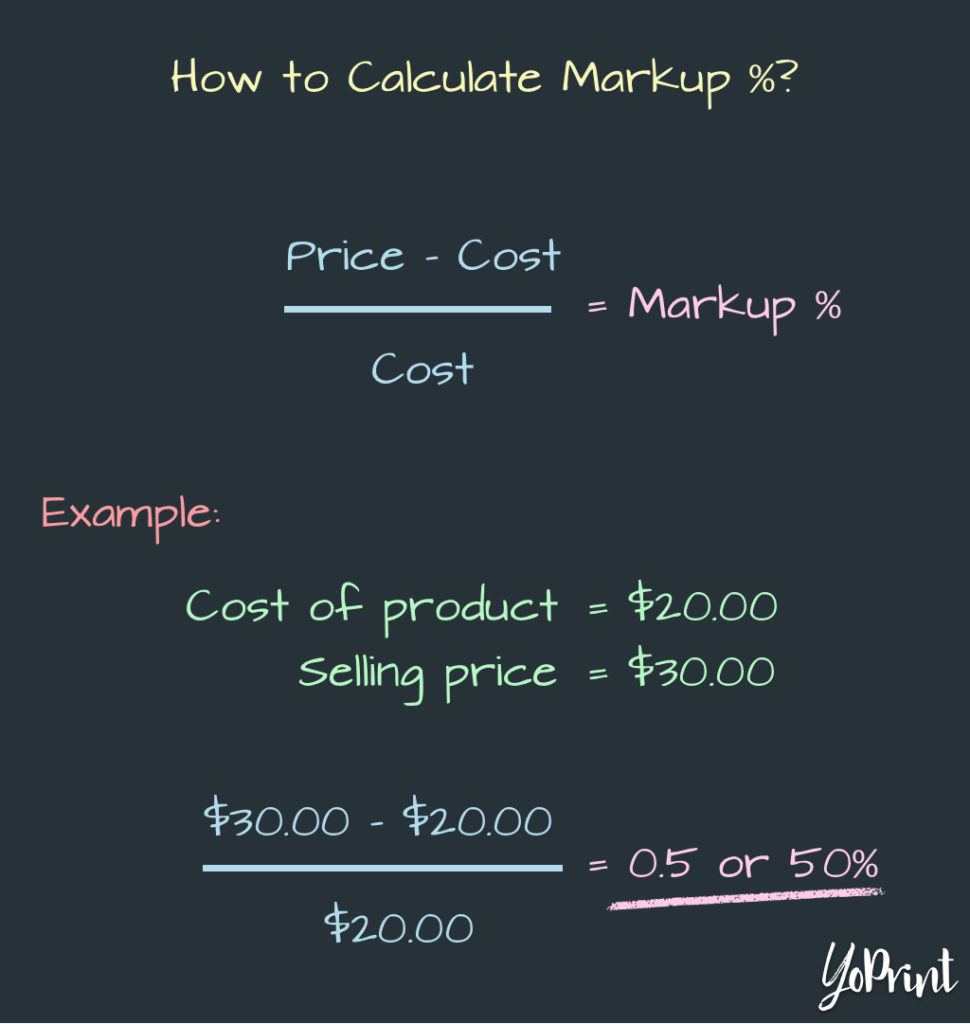
How to Use Markup % to Calculate Price?
Once you have determined your markup percentage, you can generate the price using this formula: cost + cost x markup % = price.
Now, let’s say Jane’s cost goes up by $5.00 year-over-year, and Jane needs to increase her price to maintain the same profitability level. She can do so by figuring out her current markup percentage and using it to generate the new price.
Let’s continue with Jane’s example. We know Jane’s current markup is 50%. If her cost increases by $5.00, bringing her total cost to $25.00, then her new price should be $25.00 + $25.00 x 0.5 = $37.50.
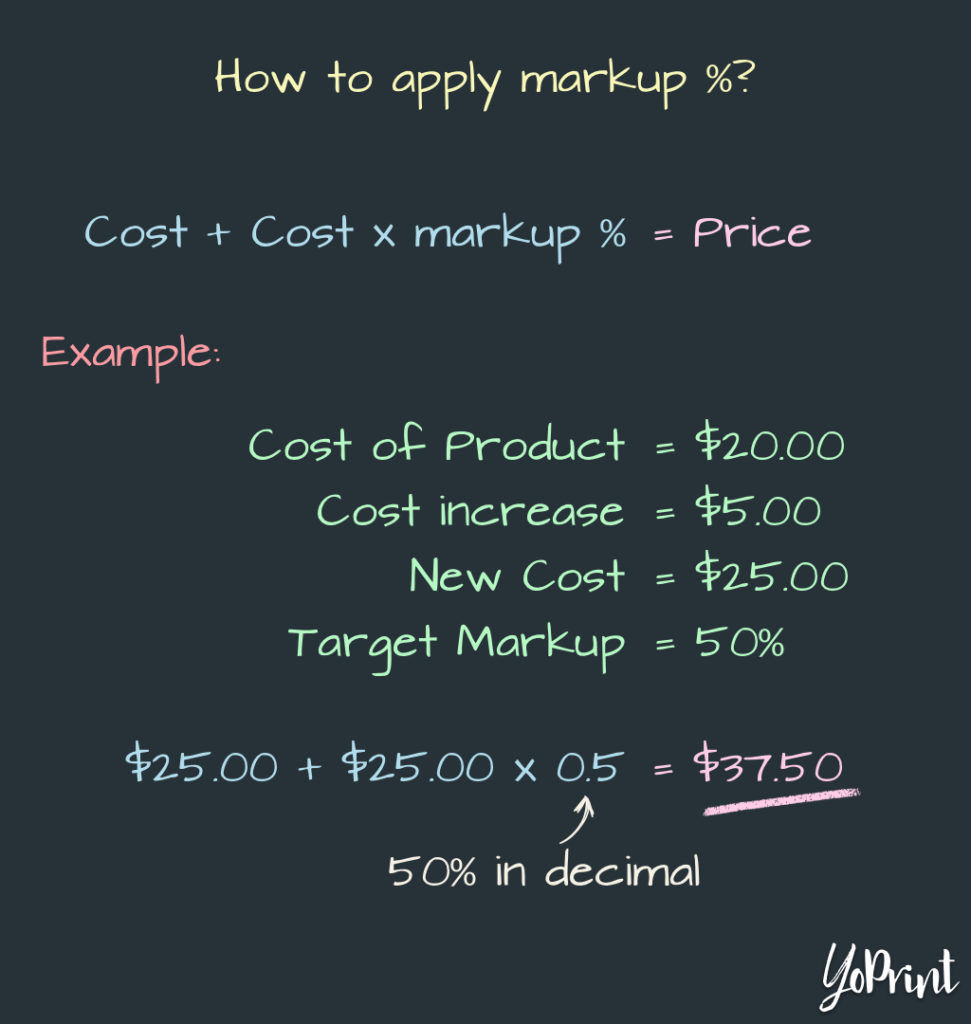
What is Margin?
Margin, or gross profit margin, is the profit to price ratio. Here is the formula: (price – cost) / price.
Using Jane’s business as an example, the product’s cost is $20, and the sales price is $30. Therefore, her margin is 0.3333, or 33.33%. In other words, Jane makes 33 cents for every dollar earned. This is a key insight!
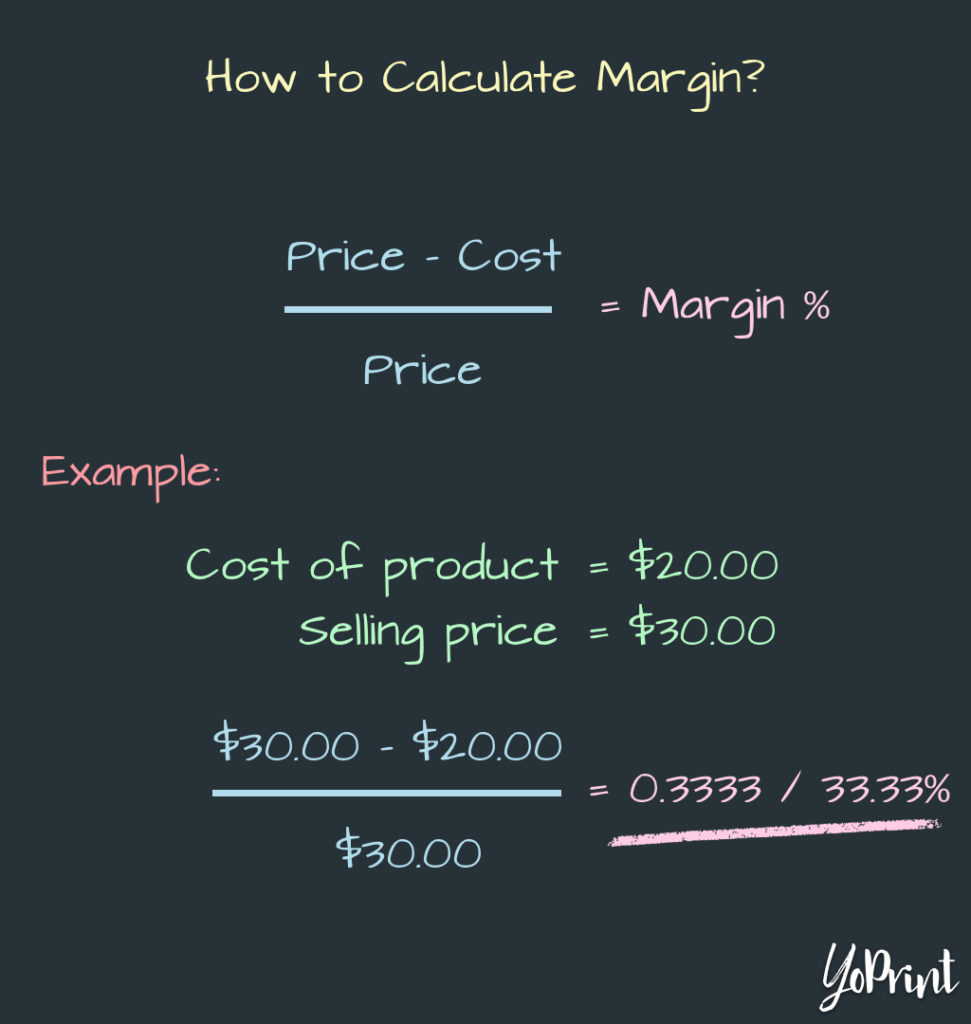
How to use Margin to Calculate Price?
You can calculate the final price based on the target margin using the following formula: cost / (1 – margin) = price.
Going back to Jane, we know Jane’s current margin is 33.33%. We know Jane’s cost for next year is $25.00. Plugging the numbers into the formula gives us: 25 / (1 – 0.3333) = $37.50.
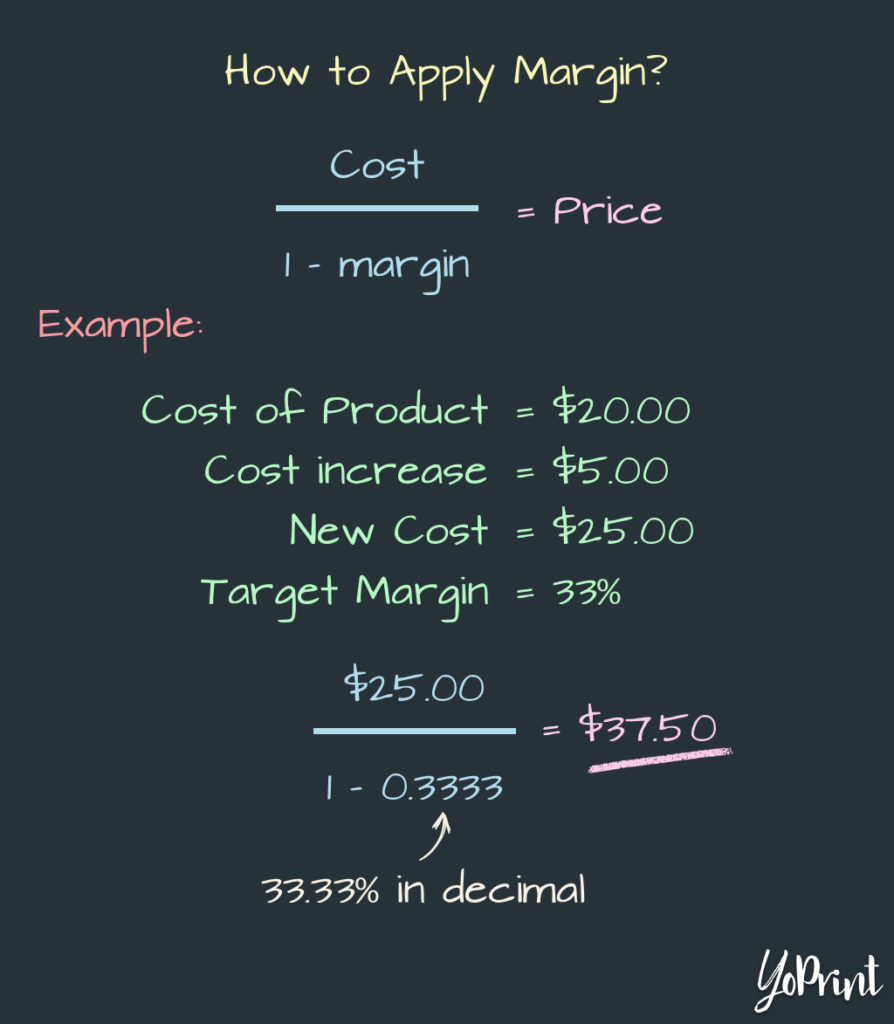
Markup and Margin: Two Sides of the Coin
While markup and margin are used to arrive at profitability, they show us different sides of the business. Fundamentally, markup is a cost-first approach to pricing: what markup can I charge customers on top of my production cost? In this case:
- You have determined your cost
- You have determined your acceptable profit
- Your revenue/price is a dependent variable
This approach is perfect:
- To ensure that your business is making a profit with each sale
- For new business owners to understand how cash flows in and out of their business
Margin is a value-first approach: what value does my product/service create for the customer? In this case:
- You know what your customer is willing to pay
- You figured out your cost
- Your profit is a dependent variable
This approach is perfect:
- To understand your cost efficiency and to track your performance
- To identify the effectiveness of individual products or services and look for areas of improvement
- To quickly identify profit per dollar earned
Markup & Margin: Conversion
Generally, the markup percentage will always be higher than your margin. If your markup is less than your margin, then you are making a loss. Here is how you can quickly convert between markup and margin:
1 – 1 / (1 + markup) = margin or 1 / (1 – margin) = markup
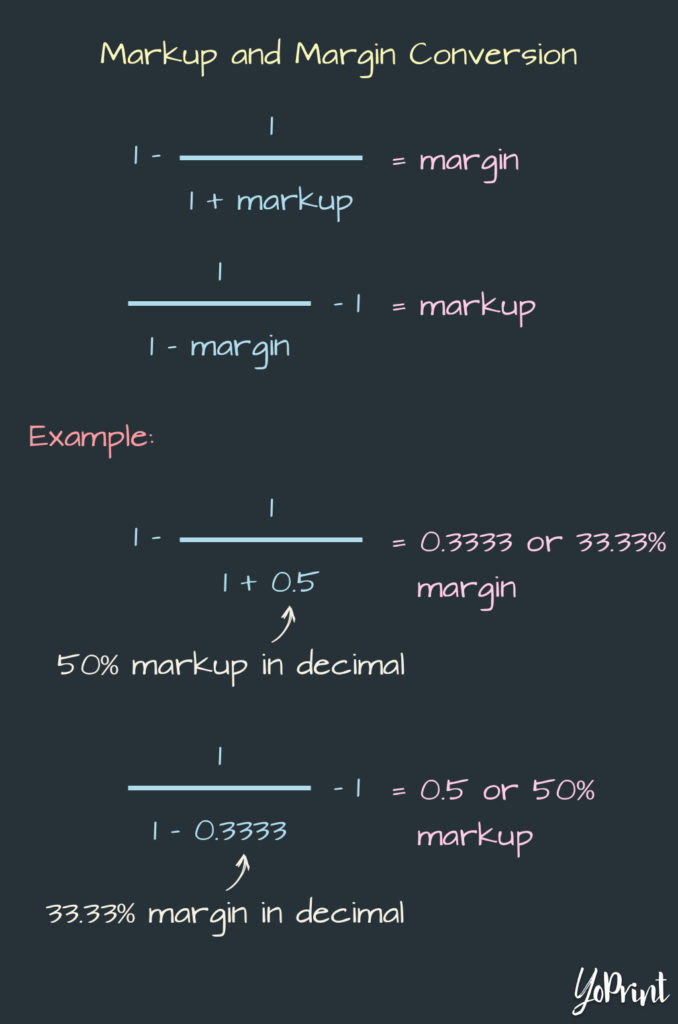
Here are some markup values and their corresponding margins.
| Markup | Margin |
| 25% | 20% |
| 50% | 33% |
| 75% | 43% |
| 100% | 50% |
| 150% | 60% |
| 200% | 70% |
| 300% | 75% |
| 400% | 80% |
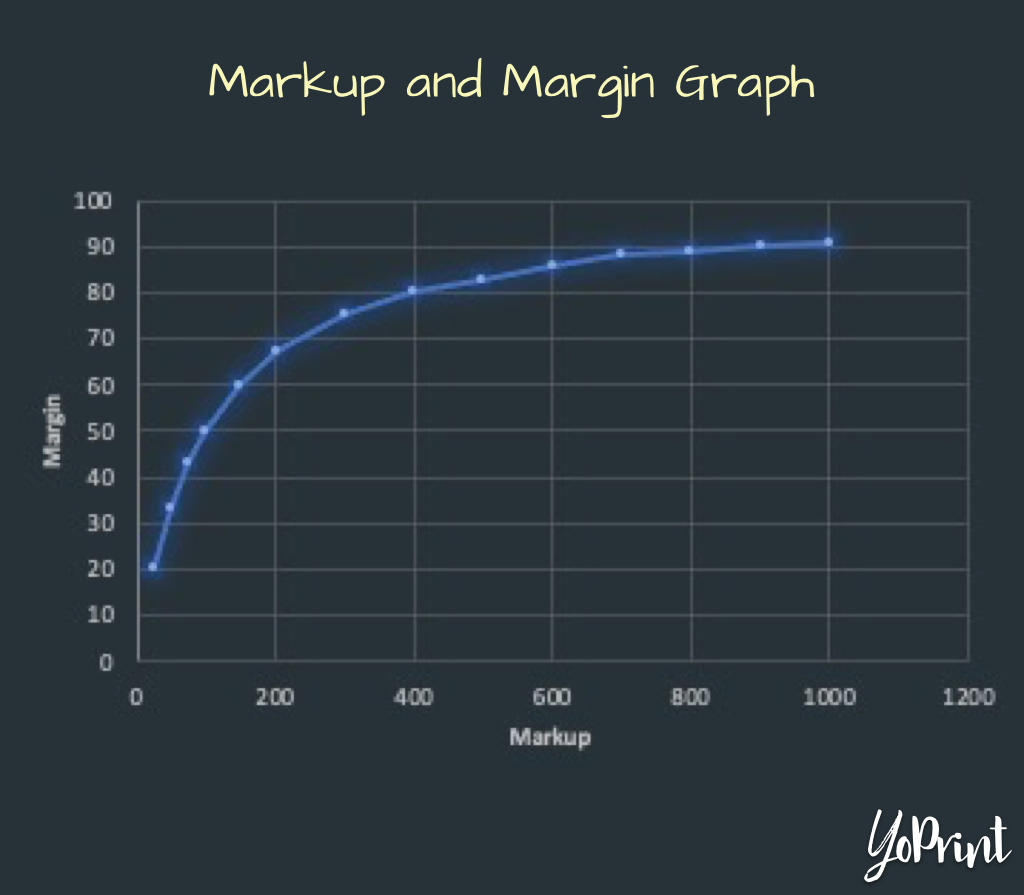
Margin vs. Markup – Which Should You Use?
If markup and margin are two different ways to price your services, which one should you use? The short answer: margin.
When it comes to recording financial information about your business, you will find that your accountant, bookkeeper, or accounting software will be more interested in the margin than markup.
Furthermore, using markup-based pricing for your business may be less profitable than it could potentially be. By knowing what your customer is willing to pay, you can readily increase your price and improve your margin.
Therefore, we recommend pricing your services using margin instead of markup.
Conclusion
Every business owner should understand the relationship between markup and margin and their differences.
An in-depth understanding not only allows you to price your services competitively but it can also help you set short and long-term goals more effectively.
We’ve created a tool to help you with your markup and margin calculation. If you are looking for shop management software that understands both markup and margin, try YoPrint for free for 15 days.
